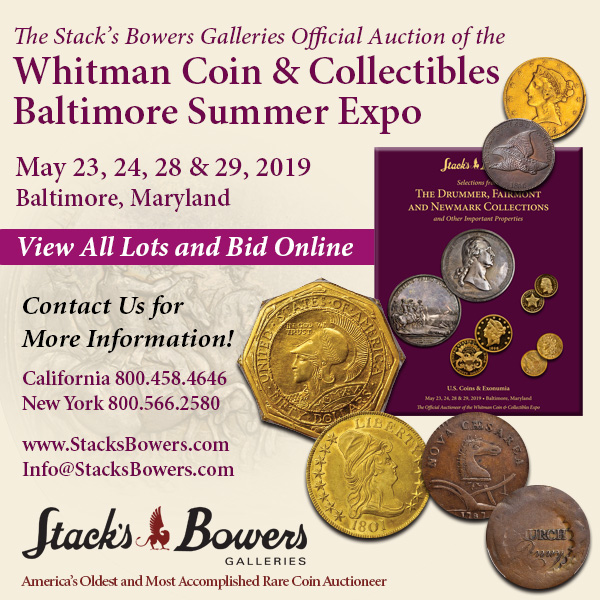
PREV ARTICLE
NEXT ARTICLE
FULL ISSUE
PREV FULL ISSUE
BOOK REVIEW: PLEASURE AND PROFIT, 2ND EDITIONMichael Marotta submitted this review of the 2nd edition of Robert Shippee's Pleasure & Profit book. Thanks! -Editor
Robert W. Shippee found no profits and significant losses in his acquisitions of high-grade certified modern coins. A Deep Cameo Proof 69 Silver 1999-S Connecticut Quarter is just not rare; and it simply never excited him. He bought the coin (and four more similar Mint States and Proof, silver and clad 1965, 1976, 1999) and he lost half of his $370 investment at sale. He bought them only to complete a PCGS Registry set. He built the set only to sell it. He made a lot of money on the truly collectible and objectively rare coins from the 18th, 19th, and 20th centuries, and he did it under ten years. This is his story. He weaves numismatics with his other passion, golf. My complete disinterest in golf did not detract from the book. And I am not an investor. As a numismatist, I write history. Whether I (or you) could afford any of these coins is also putative, but well worth considering. Shippee was an international banker. He could well afford to golf at the finest courses. So, to pay $3220 for an 1869 DDO Proof 66 Cameo Nickel 5-Cent coin was not beyond his budget. (He sold it two-and-a-half years later for $4140, a gain of 29%.) But if you stop and think about it, it might not be beyond ours, either. I mean, how much do we all spend on low grade and midrange stuff every week, whether online or at the coin store? What if you bought only one or two coins a year? What would you have at the end of ten or 20 years? Would you sell for a loss over the counter at a coin store or would your inventory be given a name in a catalog? For each entry, Shippee details the financials: cost; sale price; gain or loss; and holding period. But the book offers far more than mere gloating over the wins and polite coughs over the losses. The history of each coin also is given in a couple of paragraphs or a couple of pages, often with the nice textual details paralleling the visual appeal of the subject. "The Draped Bust, Large (or Heraldic) Eagle half dime, designed by Robert Scot, was minted in five years from 1800 to 1805, with a break in production in 1804. Fewer than 125,00 coins of this design were produced, so all dates are scarce today. In 1803, mintage was a puny 3,060 pieces, making this date a classic rarity. Only about 15 examples reside in major grading service holders, and none of these grade better than AU-50. On the rare occasion when one comes up for auction, you should not be surprised to see a six-figure price. Counterfeit examples of the 1802 dime exist, and both the Smithsonian and American Numismatic Association have one of these in their institutional collections. Of the other four dates, the 1800 is clearly the best struck and the most readily available, while the remaining three dates are all about equally scarce." Cost: $10,000; Sale Price $18,400; Gain 84%; Holding Period 3.2 years.
Whether you have an extra ten grand or not, if you want to invest in rare American coins the principles explained here are valid across the range. And, in fact, I submit that they apply not only to old coins or old books, but to any collectible: buy what other people want; buy the best you can afford; buy rarities; buy what you care about. The last point should not be overlooked. Just take refrigerators, for example. You could save your money and buy an outstanding machine that begs to be in someone else's home. But if you have no passion for household appliances, you are not likely to find another buyer who is on fire for an icebox. Before the sale of his "Waccabuc Collection" Shippee knew other collectors and was known. He was a regular at ANA conventions. He visited dealers when he traveled. He corresponded. He bid and bought. He participated in our hobby. His passion for the game was the key to his success. To read the earlier E-Sylum articles, see:

Wayne Homren, Editor The Numismatic Bibliomania Society is a non-profit organization promoting numismatic literature. See our web site at coinbooks.org. To submit items for publication in The E-Sylum, write to the Editor at this address: whomren@gmail.com To subscribe go to: https://my.binhost.com/lists/listinfo/esylum All Rights Reserved. NBS Home Page Contact the NBS webmaster 
|
